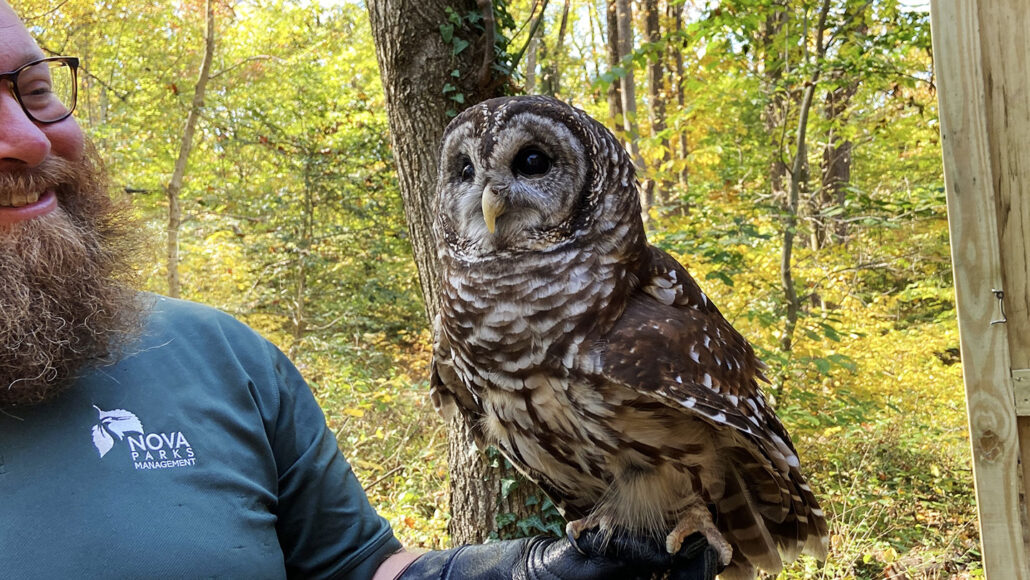Questions for ‘Dinosaurs are still alive. Today, we call them birds’

Most researchers agree that birds — such as Twiggy, a barred owl at Potomac Overlook Regional Park in Arlington, Va. — descended from small theropods about 160 million years ago. Their ancestors survived the asteroid impact that wiped out all nonavian dinosaurs.
A. Tremper
To accompany ‘Dinosaurs are still alive. Today, we call them birds’
SCIENCE
Before Reading:
- Imagine a child asks you, “What are dinosaurs?” Write a response summarizing what you know about dinosaurs.
- Locomotion describes the ability of an animal to move from one place to another. Besides walking or running, list two other methods of locomotion animals might use. Now imagine you are a researcher who studies fossils of extinct animals to determine what locomotion methods they used. Describe one specific fossil feature that would be a clue that a species could walk. Then, describe one feature that would suggest a species could not walk. Pick one other method of locomotion and describe a clue from a fossil that might indicate that a particular species was or was not capable of using that locomotion method.
During Reading:
- What kind of animal is Twiggy?
- What feature of Archaeopteryx led scientists at the time of its discovery to view it as the first bird?
- Describe some general characteristics of theropods. Besides Deinonychus, what is another example of a theropod?
- Describe the evolutionary relationship that scientists have identified between theropods and birds.
- What feature of Microraptor fossils made them particularly interesting to Hans Sues?
- What feature of Microraptor are researchers referring to if they talk about “trousers”? How do researchers think Microraptor used this feature?
- Jingmai O’Connor and her team devised a set of “rules” for birds capable of flight. List two of these rules.
- Give an example of how researchers applied these “rules” to birdlike fossils and determined the likelihood of that species having the ability to fly.
- How did Oviraptor get its name? Based on current understanding, how might this name be misleading?
- How long ago did penguins evolve?
After Reading:
- This story points out that feathers evolved long before the ability to fly. That means feathers didn’t initially help animals fly. What benefit might these early feathers have provided?
- What does it mean to repurpose something? Consider what anatomical requirements an animal would need to develop the ability to fly. In one sentence, explain how someone might view the evolution of feathers-for-flight as repurposing. Consider the extent to which evolutionary repurposing might play a role in the development of other abilities. Give another example of an anatomical structure that might have changed or evolved via a similar type of repurposing. Briefly explain your answer.
- What did researchers mean when they described the Jaculinykus fossil as preserved in “life position”? What did researchers learn from this unique fossil that they would not learn from a more typical one?
- The term “fossil” doesn’t just apply to pieces of a preserved life form. It can also apply to indirect, or trace, evidence that an organism was present. These are called trace fossils. Give two examples of evidence that would be considered trace fossils of past life. For each, describe what such a fossil might reveal about an ancient species that you probably wouldn’t learn from a species’ fossilized skeleton alone.